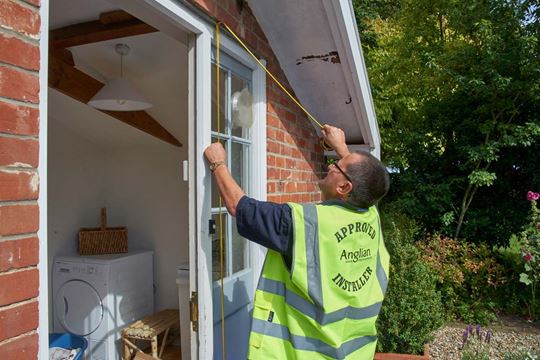In the UK, 76% of burglaries target the doors. So it’s worth investing in the best security features for your front door. Our guide breaks down everything you need to know about back and front door security. Learn when to change the locks, the best locks to use, and the most secure door materials to buy.
There are five main reasons why you might need to change your locks.
While front door security features may cost extra, they provide peace of mind and enhance the safety of your home. There are lots of affordable ways to secure your door, like adding new locks or bolts. The cost of securing a front door varies depending on how far you're going.
Door security costs to consider:
Your home is only as secure as its weakest point. Most burglaries target the door. If you know where the weakest point is and address it, you can better protect your home from intruders.
The three weakest points of entry for a door are:
You want your front and back doors to be secure. We outline the main areas to increase their security in this section.
The locks on our doors carry Secured by Design accreditation. This means we’ve adopted crime prevention measures in the design of our doors. They are ideal to keep your home safe and secure. Secure locks like these will be:
We also supply smart locks that you unlock with your smartphone. They include a tamper alarm and are Secured by Design accredited.
Adding a more secure lock can increase back door and front door security. There are a few different types of locks to think about:
Burglars can easily break a cheap door handle and get into your house. Spending a little more on a handle can go a long way to increasing door security. Getting handles that lock with a key secures the latch as well as the lock, making it twice as hard to break in.
Letterboxes, by design, grant some access to your home. Add a restrictor in front of the inside opening to make it harder for thieves to use the letterbox to gain entry. Or install an indoor box catcher on the door for more complete letterbox security.
A weak hinge can help an intruder get into your home. Door hinges can deteriorate over time with years of consistent use. Keep on top of it by checking them often and replace a hinge when it gets weak.
Your door frame can also provide easier access for intruders. If you have a damaged frame, it compromises the security of the door. If you notice anything, it may be time for a new door set.
A lack of visible security makes your home more attractive to burglars. As well as front and back door security, consider investing in home security features.
Doors that open into an alley or side street with poor lighting could be an easy target for thieves. Security systems with alarms or cameras are a great deterrent. Their loud noise and outdoor flashing light make criminals think twice.
Motion sensitive security lights around doorways are a good way to deter burglars. No lighting around doorways makes it harder to see criminals breaking in. A light is a small addition that can make a big difference.
Modern door materials all offer durability and security. Some materials can be stronger than others and aid security. But most essential is the quality of the lock and how the door fits in the frame.
A low-quality lock or frame can let down even the strongest door. When you get a replacement door with us, you get the whole door set installed for you. Door sets with quality locks and mechanisms are the best way to get a door that keeps your home secure.

Composite doors are one of the most popular door materials for UK homeowners. Their skin is made of a thermoplastic polymer. It houses either a thick timber or insulating foam in the middle. This makes composite doors strong and easy to maintain.
Choose a composite door with multipoint locking and 3-star cylinder locks. Keep the frame clear of debris and dirt, and moving parts lubricated. This ensures that latches and locks engage properly.
Many people choose uPVC doors as they’re long-lasting and affordable. We make modern uPVC doors, like ours, with a multi-chambered uPVC construction. This means that intruders have to break several parts of a door to gain access.
Many people choose wooden doors for their traditional, natural look. Wood by its nature is strong and difficult to break, making it a secure choice too. For the best security, choose wooden doors with multipoint locking and 3-star cylinder locks.
The bolts secure the door at several points around the frame and the lock is hard to break. Keep your wooden door mechanisms maintained to keep it strong and secure.
Aluminium is one of the strongest materials you can use for a door. Depending on their quality, modern aluminium doors can be hard to break into. We make ours with a very strong alloy, welded joints and robust hinges.
Aluminium is easy to maintain. We also reinforce our door frames with corner ties for more strength and security.
Our quality doors are Made in Britain and carry several guarantees and industry accreditations.
Features of the Yale cylinder lock include:
Fill out our online form for a no-obligation quote to improve the security of your home today.
 Do new doors add value to your home?
Do new doors add value to your home?
Just how much are all these home improvements adding to the value of your home? Here, we break down how a new door can contribute.
 Fitting your new doors
Fitting your new doors
Just what exactly happens when Anglian makes you a new door? We'll break down the process so you know what to expect.
 How to choose your new external doors
How to choose your new external doors
Which of our four door styles is right for you? Here, we'll break down the benefits of each to help you figure out which one will suit your home best.


